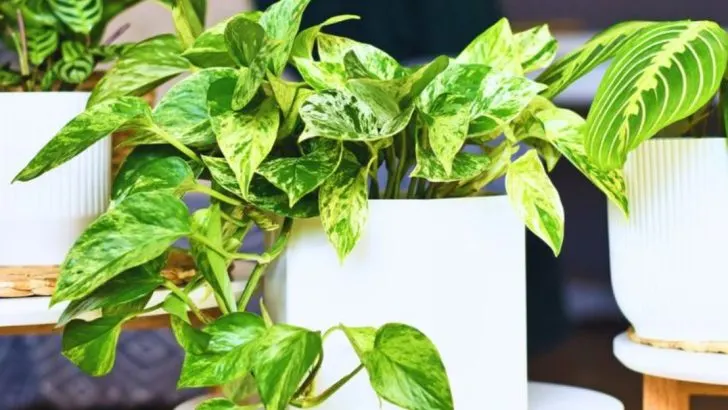Most people grow houseplants for their foliage, but what if you want a little more color? While many indoor plants rarely bloom without greenhouse-like conditions, there are several that happily flower inside your home — even on a windowsill.
In this article, we’ll reveal 12 houseplants that consistently bloom indoors, bringing bursts of color, fragrance, and cheer to your interior spaces. We’ll also cover 8 common varieties that are known for their looks but are notoriously stingy with flowers, so you know what to expect.
Bring the beauty of a blooming garden right into your living room — no magic required.
African Violet
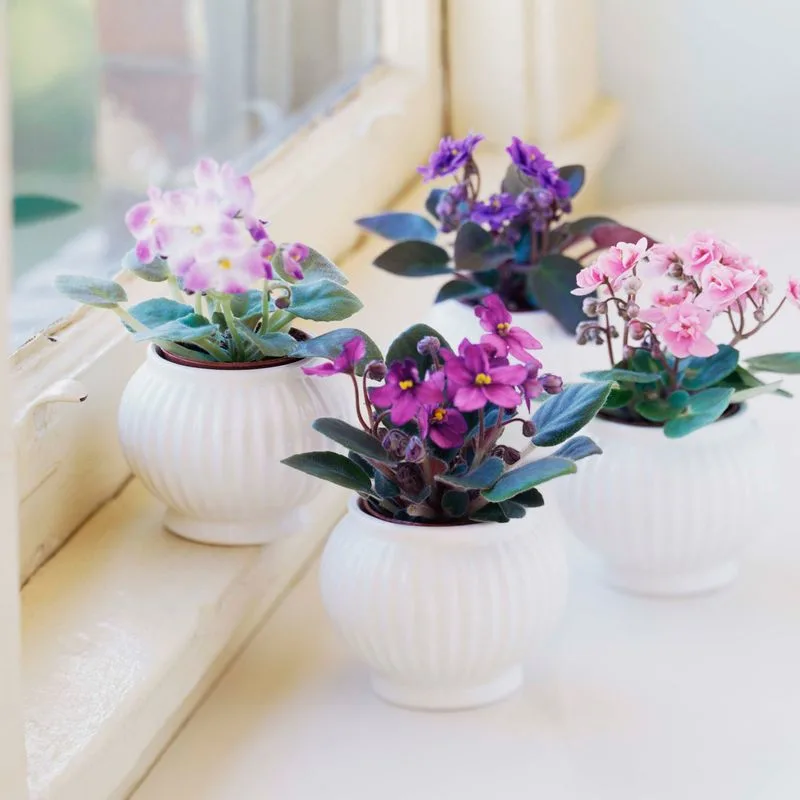
Despite its delicate appearance, the African Violet is a powerhouse of indoor blooming. Its velvety leaves and vivid blooms captivate many plant enthusiasts. This plant flourishes with indirect sunlight and regular watering.
Interestingly, African Violets can bloom multiple times a year, making them a favorite for continuous indoor color. Their low-maintenance nature and compact size make them ideal for small spaces.
Did you know? African Violets originated from Tanzania and have been cultivated as houseplants since the late 19th century.
Peace Lily
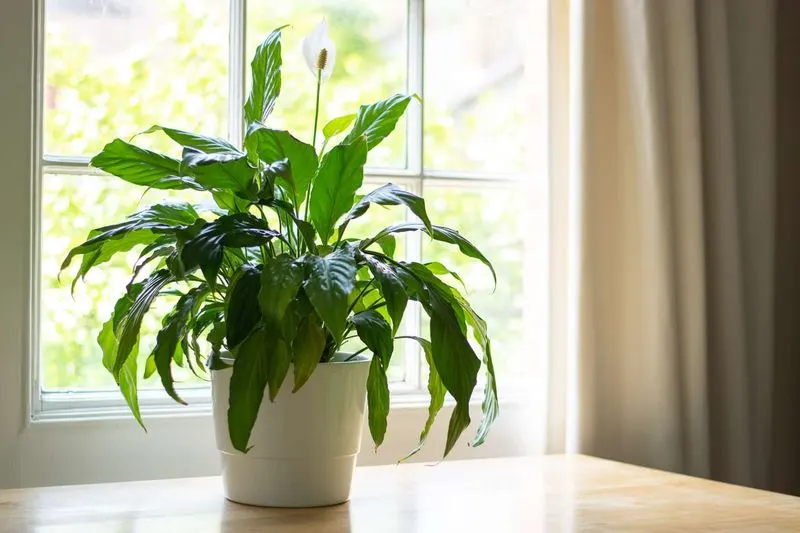
Known for its elegant white flowers, the Peace Lily is a true indoor star. Its ability to thrive in low light conditions makes it a versatile choice for various home settings. This plant’s blooms add an air of sophistication to any room.
Peace Lilies are not just about looks; they are known for purifying the air, making them a healthy addition to homes. Their low water needs make them perfect for busy individuals.
Fun fact: Peace Lilies are often associated with tranquility and are commonly gifted as symbols of peace.
Christmas Cactus
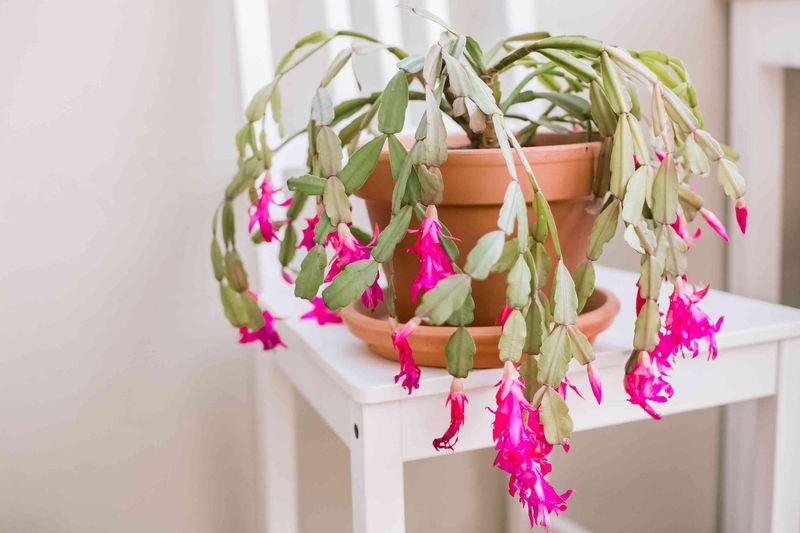
The Christmas Cactus is a festive favorite that blooms just in time for the holiday season. Its vibrant flowers and unique flat stems make a striking addition to any decor. This plant thrives in bright, indirect light.
The Christmas Cactus is long-lived, often passed down through generations, adding a personal touch to its charm. Water it when the top inch of soil feels dry.
Did you know? This plant is native to Brazilian rainforests, where it grows on trees and rocks, making it quite the resilient houseguest.
Kalanchoe
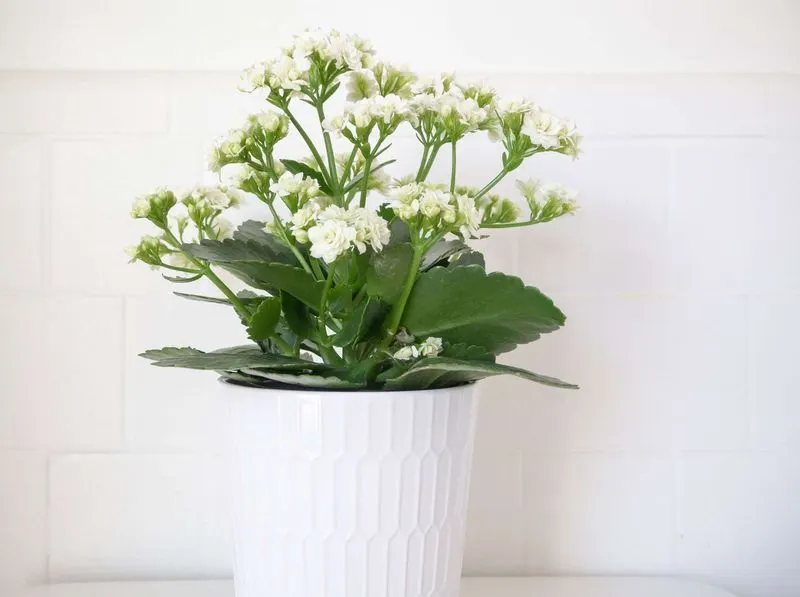
Bursting with clusters of vibrant flowers, Kalanchoes are a sight to behold indoors. Their fleshy leaves store water, allowing them to survive in drier conditions. These plants are perfect for adding a pop of color to sunny spots.
Kalanchoes are low-maintenance and only require occasional watering. Their extended bloom period means you’ll enjoy their beauty for months.
Interesting tidbit: Kalanchoes belong to the succulent family and are native to Madagascar, showcasing their adaptability to different environments.
Anthurium
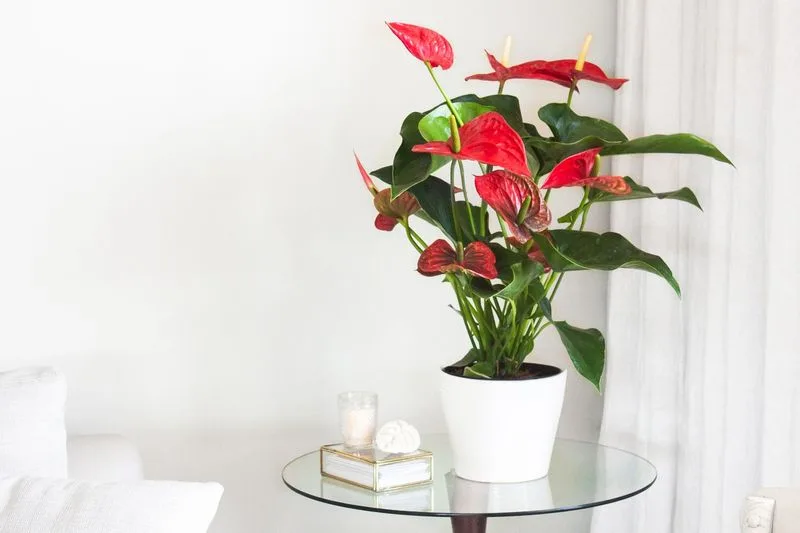
With its glossy leaves and striking spathes, the Anthurium adds an exotic touch to your indoor garden. Known for its long-lasting blooms, this plant enjoys warmth and humidity, mimicking its tropical origins.
Anthuriums are not only visually appealing but also easy to care for. Keep them away from direct sunlight and water them moderately.
Quirky fact: Anthuriums have been called “flamingo flowers” due to their unique shape and vibrant colors, capturing the imagination of many plant lovers.
Orchid
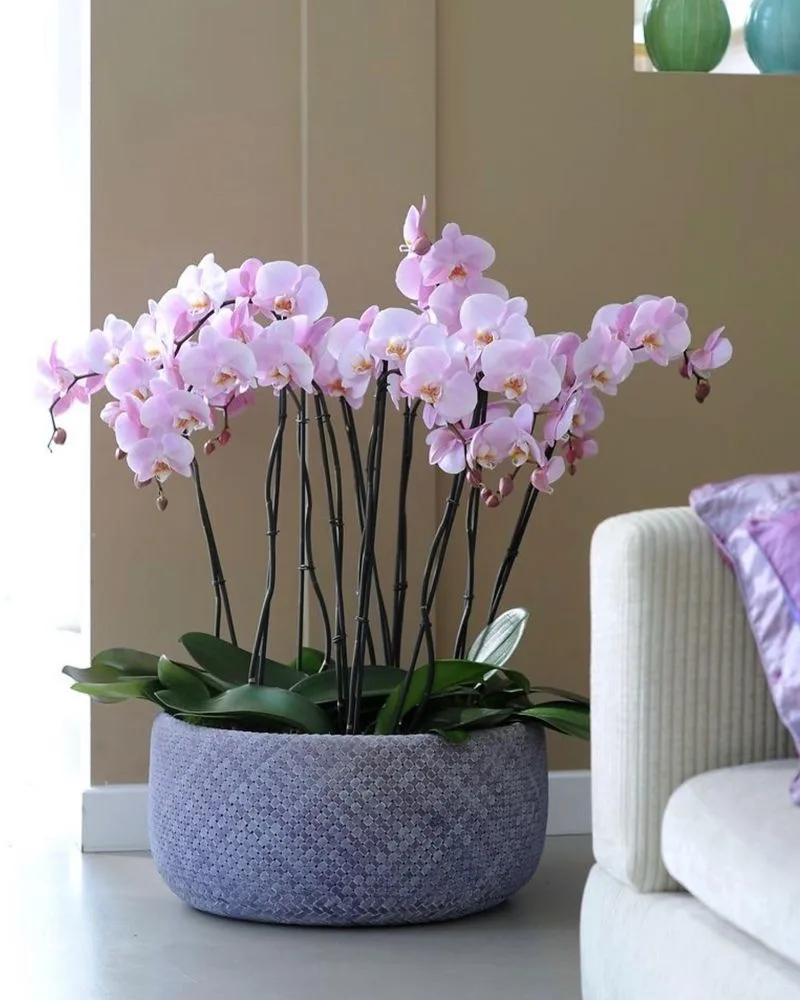
Orchids are synonymous with elegance, boasting intricate flowers that can last for weeks. These beauties thrive with the right care, preferring indirect sunlight and high humidity.
While they may seem demanding, the effort is worthwhile. Orchids bring a touch of sophistication to any space, making them a popular choice for many homes.
Did you know? Orchids are one of the largest plant families, with over 25,000 species, each with unique characteristics and captivating blooms.
Hibiscus
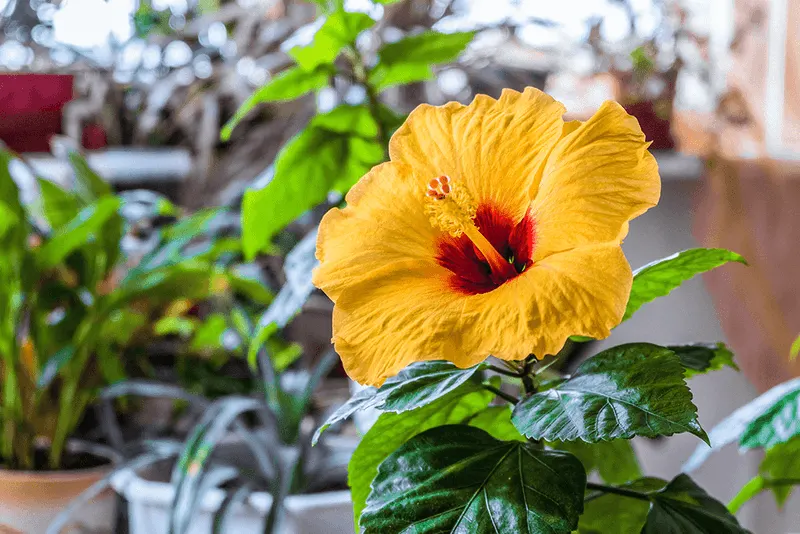
Hibiscus flowers transport you to a tropical paradise with their vibrant hues and large blooms. While traditionally an outdoor plant, certain varieties adapt well indoors with ample sunlight.
These plants are perfect for bright rooms and can even be moved outside during warmer months. Hibiscus requires frequent watering but rewards with stunning flowers.
Fascinating fact: Hibiscus tea, made from the flowers, is popular worldwide and offers numerous health benefits, adding to this plant’s allure.
Bougainvillea
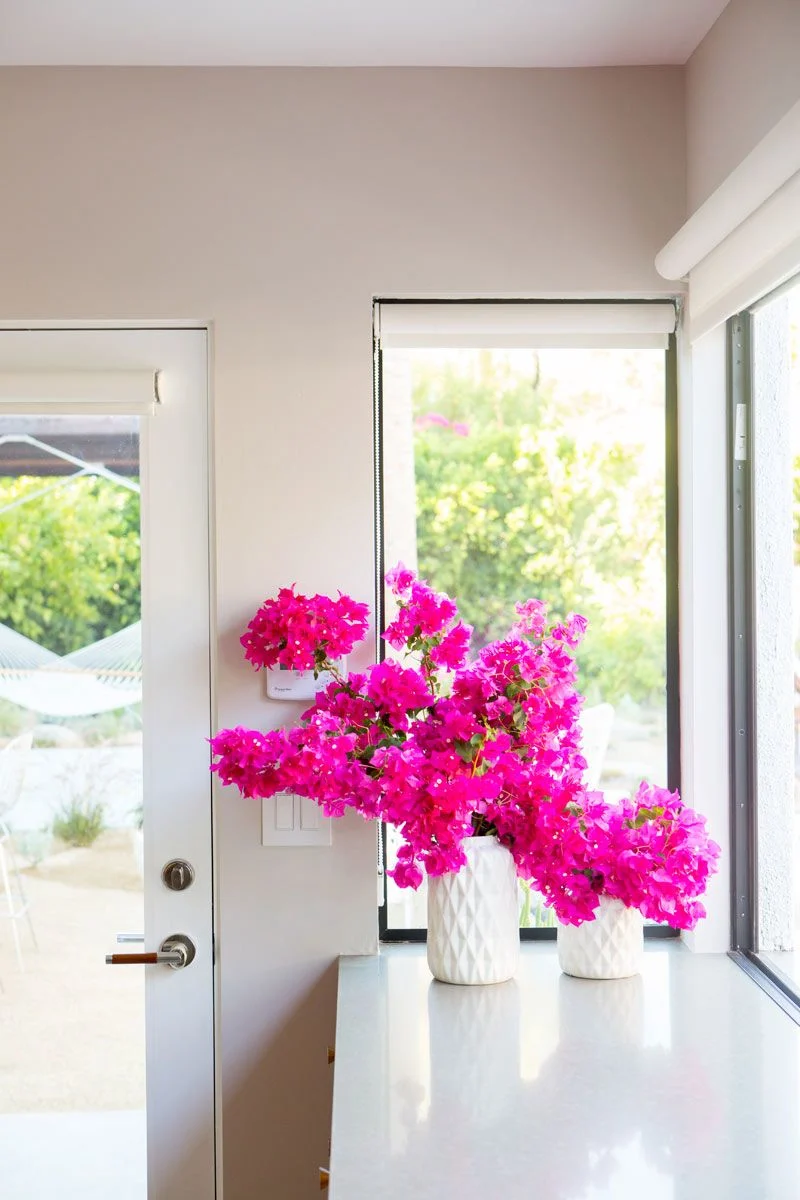
Bougainvillea’s vibrant bracts create a stunning display, mimicking flowers in a spectrum of colors. When given enough sunlight, this plant can bloom indoors, adding a splash of drama to any setting.
Though it demands a bit more care, such as regular pruning to maintain shape, the visual payoff is worth it. Bougainvilleas celebrate sunlight and will thrive in bright spaces.
Fun tidbit: Bougainvillea is named after French explorer Louis Antoine de Bougainville, who discovered it in Brazil during the 18th century.
Jasmine
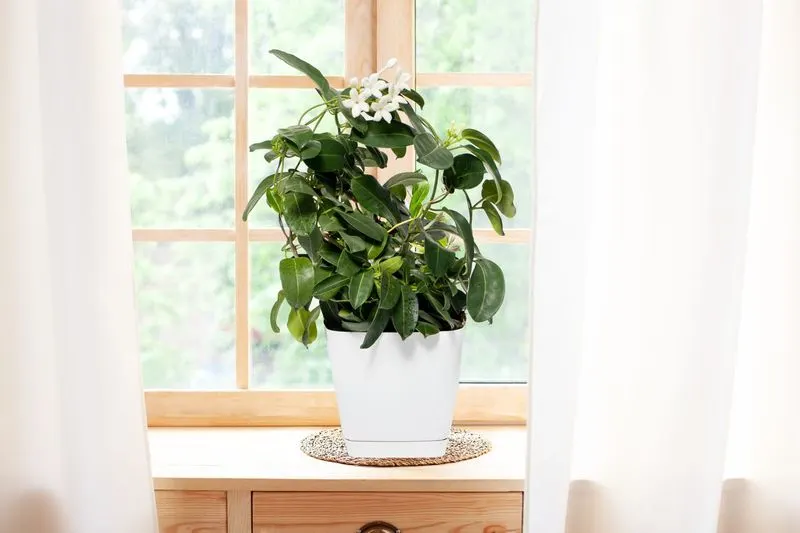
Jasmine’s star-shaped flowers and enchanting fragrance make it a beloved indoor companion. This plant enjoys bright light and regular watering, making it a delightful addition to well-lit rooms.
Besides its visual appeal, jasmine’s scent is known for promoting relaxation, making it perfect for bedrooms. It thrives with care and will reward you with its aromatic blossoms.
Did you know? Jasmine flowers are often used in perfumes and teas, celebrated for their soothing properties and sweet aroma.
Amaryllis
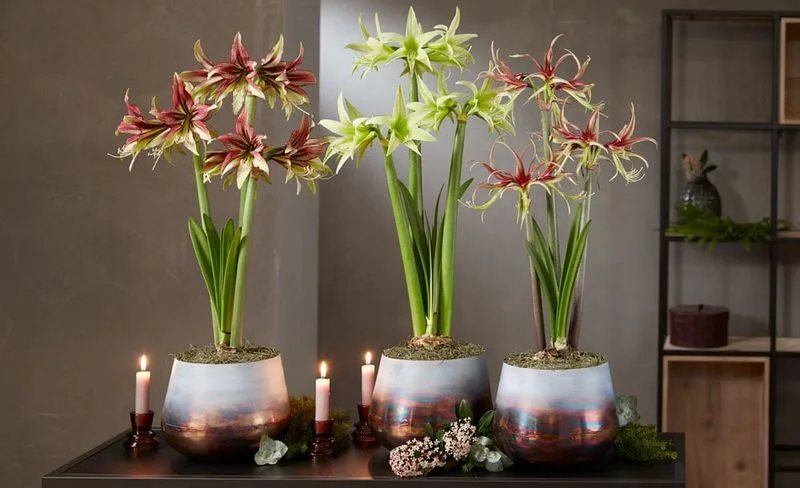
Amaryllis is renowned for its impressive, trumpet-shaped flowers that bloom indoors during the winter months. These plants are a favorite for holiday displays with their bold colors and striking size.
They require minimal watering and prefer a sunny spot to flourish. Once planted, the anticipation of blooms adds excitement to indoor gardening.
Historical note: Amaryllis has been cultivated since the Victorian era, symbolizing pride and beauty, and continues to be a cherished holiday decoration.
Begonia
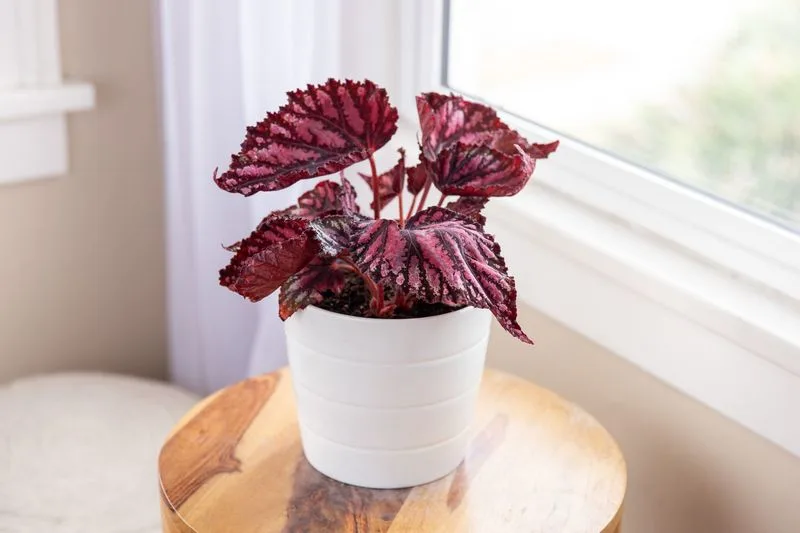
Begonias charm with their varied leaf shapes and colorful flowers. These versatile plants adapt well indoors, offering beauty with minimal effort. Bright but indirect light is perfect for them.
Their ability to bloom throughout the year makes them a favorite among indoor gardeners. Regular watering and a bit of humidity keep begonias thriving.
Interesting tidbit: Begonias are named after Michel Bégon, a French governor who was an avid plant collector, ensuring their lasting legacy in the botanical world.
Gardenia
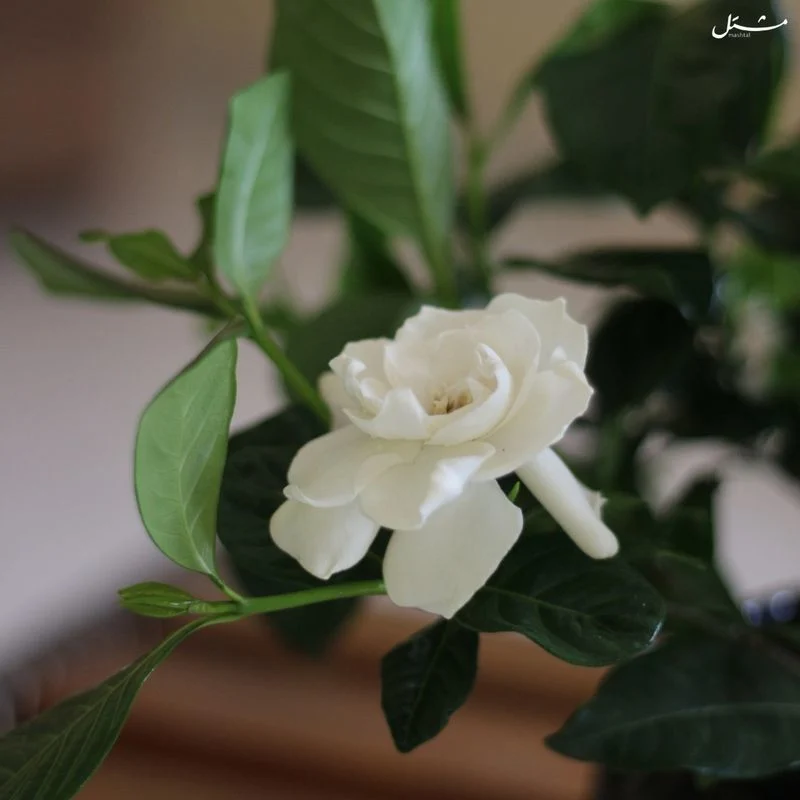
Gardenias bring a classic elegance with their fragrant, creamy blooms. These plants prefer bright light and high humidity, recreating their native subtropical environment.
Although they can be challenging, the reward of their stunning flowers and scent makes them worthwhile. Gardenias are often associated with romance and nostalgia.
Did you know? Gardenias were popular in 19th-century corsages, symbolizing secret love, and continue to be cherished for their beauty and fragrance.
Fiddle Leaf Fig
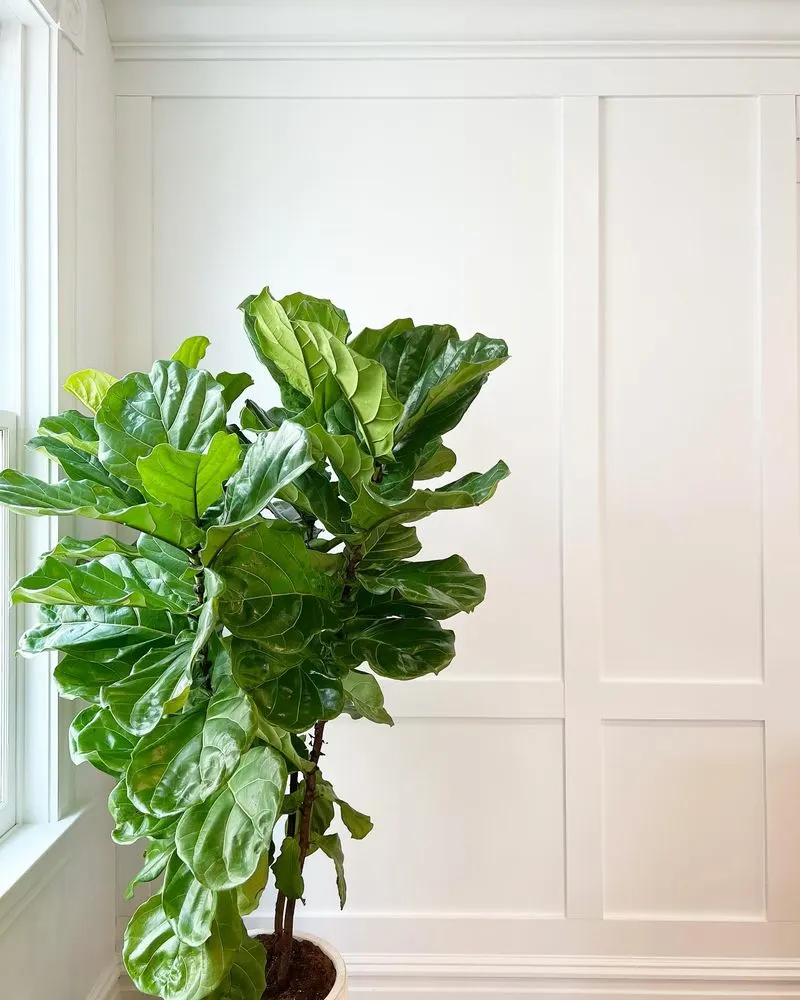
While known for its dramatic leaves rather than flowers, the Fiddle Leaf Fig is a statement piece in indoor decor. It’s less about blooms and more about its elegant foliage, which adds a modern touch to any space.
This plant enjoys bright, indirect light and requires regular watering to maintain its striking appearance. The Fiddle Leaf Fig’s imposing presence makes it a favorite among interior designers.
Interesting tidbit: Native to Western Africa, the Fiddle Leaf Fig’s popularity soared in the 21st century, becoming a symbol of contemporary home aesthetics.
Spider Plant
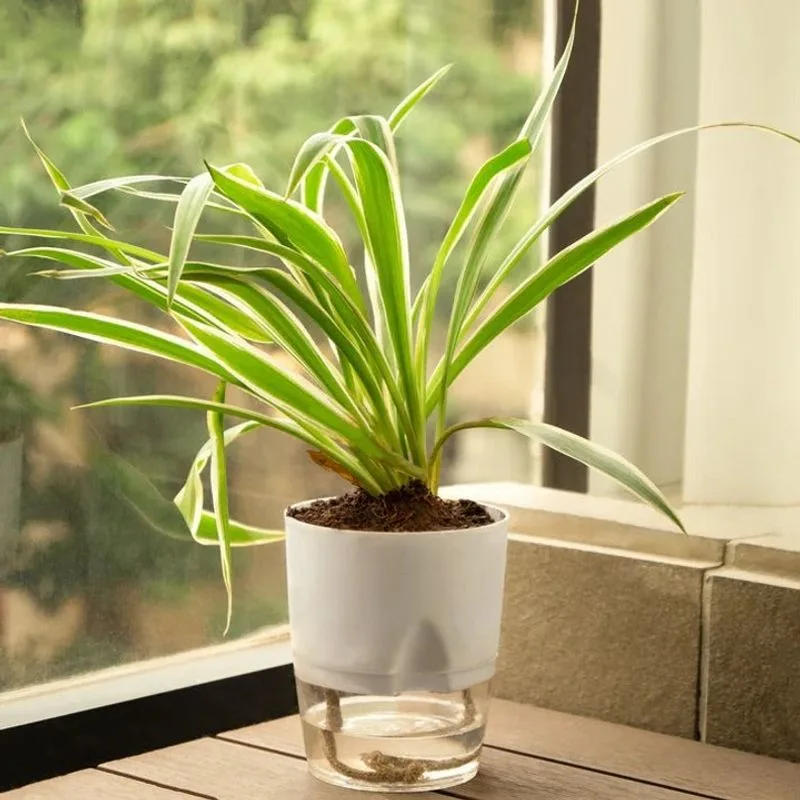
Spider Plants may not bloom often, but their striking leaves make them a beloved indoor plant. Known for their air-purifying qualities, they adapt to various light conditions, offering versatility for any room.
These plants are easy to care for, making them perfect for beginners. Their small white flowers, when they do appear, are a delightful surprise.
Quirky fact: Spider Plants produce “pups” or “babies,” small offshoots that can be propagated, making them a favorite for sharing among friends and family.
ZZ Plant
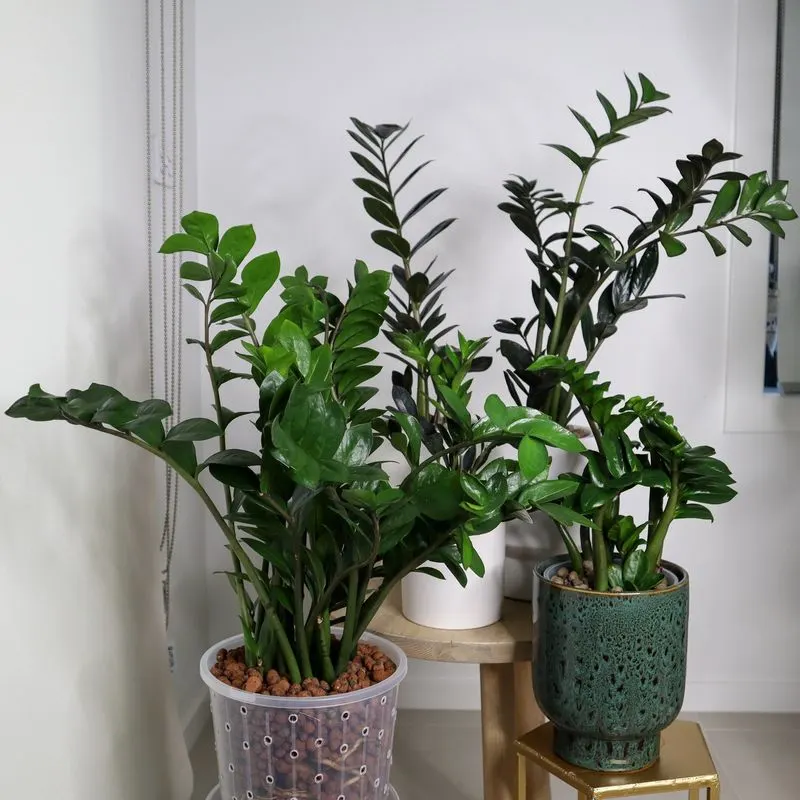
The ZZ Plant is all about resilience, thriving in low-light conditions with minimal care. While flowers are rare indoors, this plant’s glossy leaves provide a sculptural element to any decor.
It’s an excellent choice for those who want greenery without the hassle. Ideal for offices and homes, the ZZ Plant can survive with infrequent watering.
Fun tidbit: The ZZ Plant is native to Eastern Africa and is known for its ability to tolerate neglect, earning it the nickname “Eternity Plant.”
Snake Plant
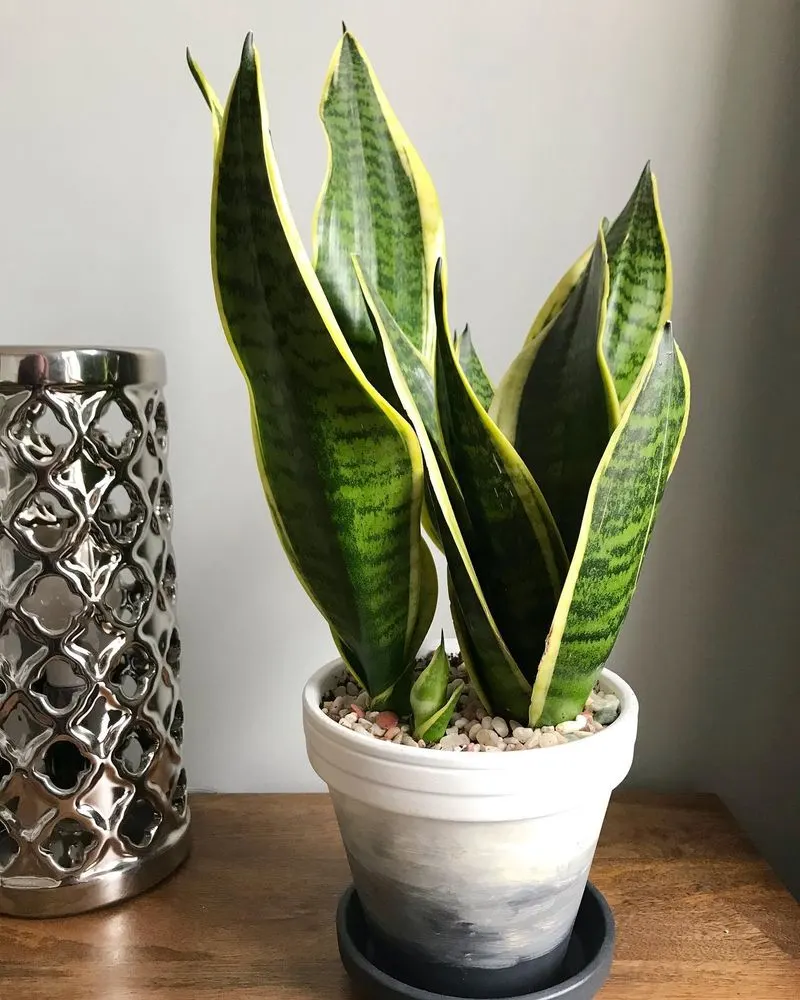
Snake Plants are renowned for their hardy nature and striking appearance. While they rarely flower indoors, their architectural leaves command attention, making them a staple in modern decor.
These plants are incredibly low-maintenance and can thrive in various lighting conditions. They’re also known for improving indoor air quality.
Fun fact: Snake Plants are often called “Mother-in-Law’s Tongue,” reflecting the sharpness of their leaves, and have become symbols of resilience and endurance.
Rubber Plant
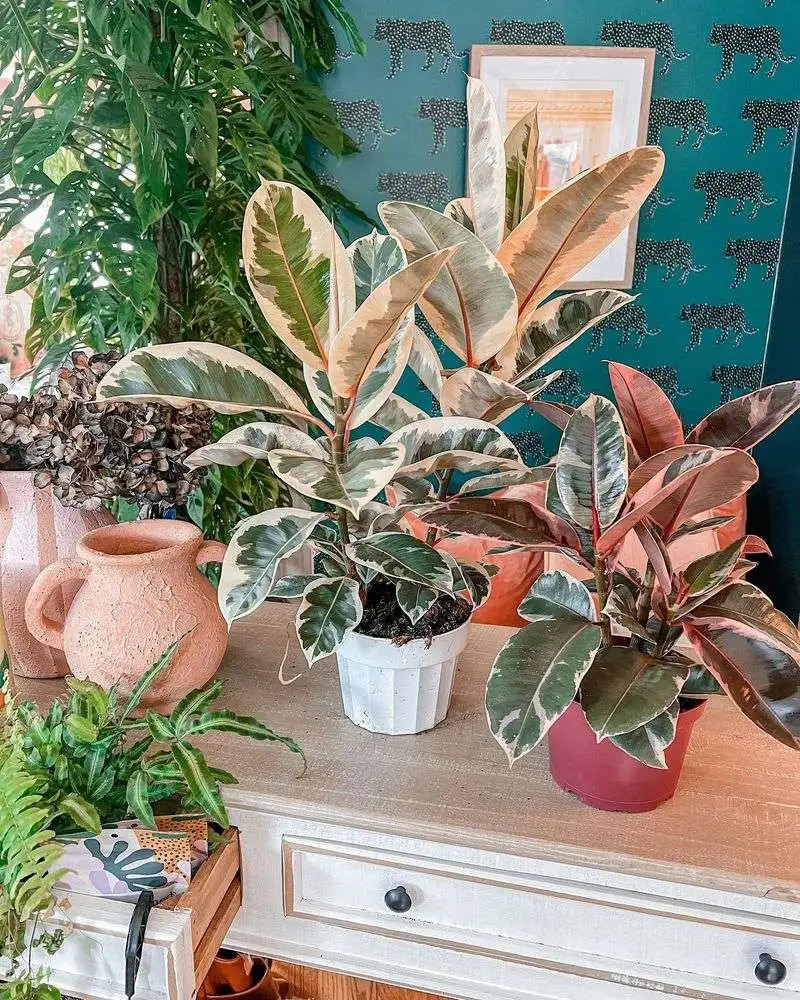
With its broad leaves and robust presence, the Rubber Plant adds a touch of greenery to any indoor space. While it seldom flowers indoors, its foliage is a significant decorative element.
This plant prefers bright, indirect light and is relatively easy to care for, requiring moderate watering. Its imposing leaves make it a statement piece in any setting.
Did you know? The Rubber Plant’s latex was once used to make rubber before synthetic alternatives became available, adding an industrial past to its indoor appeal.
Pothos
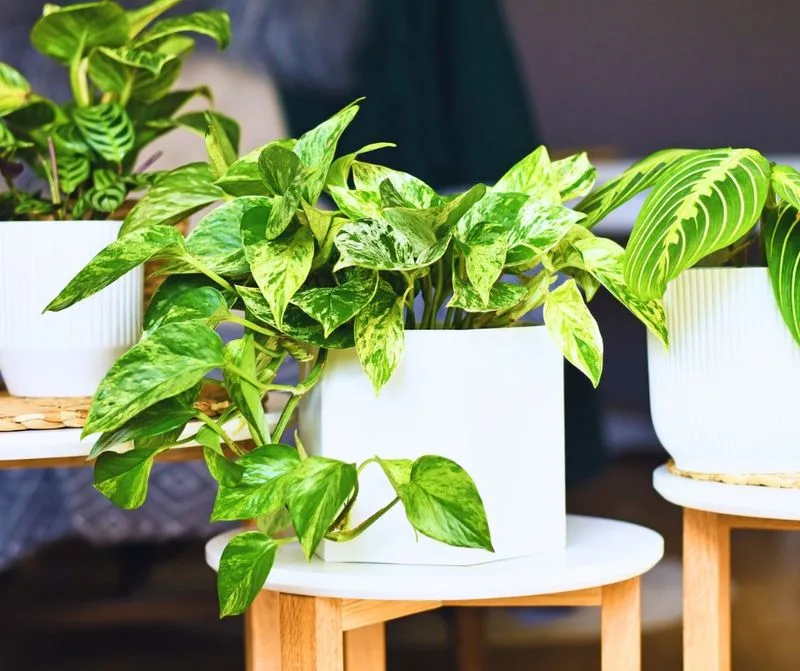
Pothos are celebrated for their trailing vines and heart-shaped leaves, rather than for their flowers. They adapt well to various lighting conditions, making them a versatile choice for any room.
These plants are straightforward to care for, thriving with regular watering and occasional pruning. Pothos’ lush foliage creates a relaxed ambiance in any setting.
Interesting tidbit: Pothos are often called “Devil’s Ivy” because they are nearly impossible to kill, adding a touch of mystery to their hardy nature.
Monstera Deliciosa
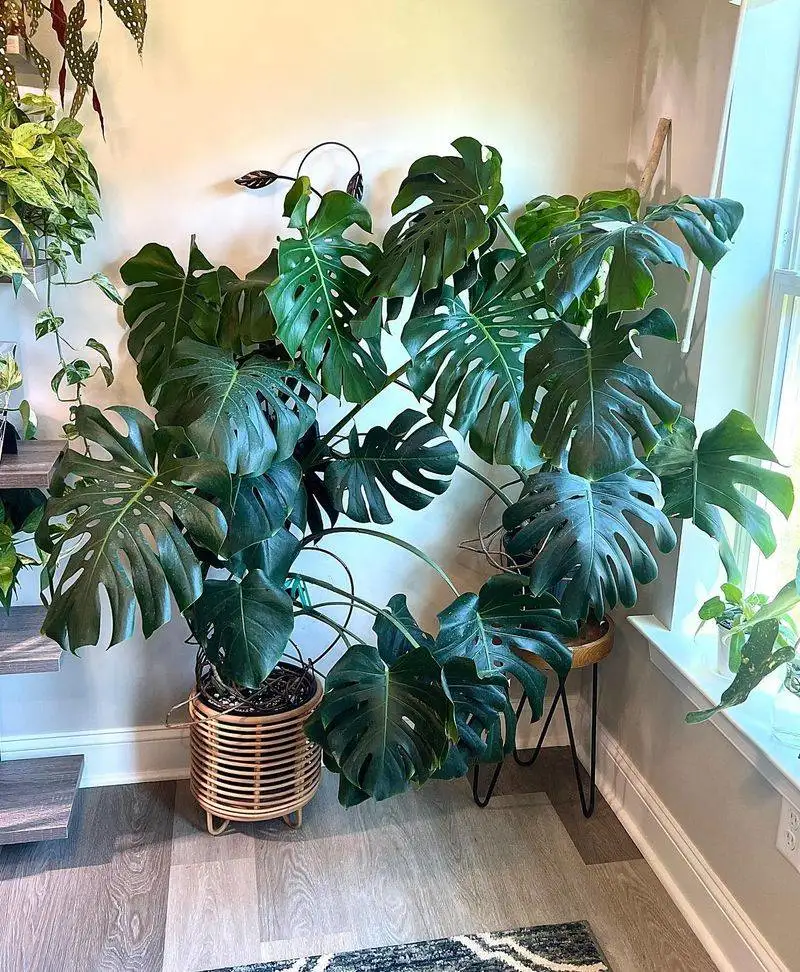
Known for its dramatic, split leaves, the Monstera Deliciosa is more about foliage than flowers. It prefers bright, indirect light and can thrive indoors with proper care.
This plant is a favorite for those looking to add a tropical vibe to their homes. Its impressive leaf patterns make it a standout feature in any room.
Did you know? The “Deliciosa” in its name refers to its edible fruit in the wild, although it rarely produces them indoors, focusing instead on its stunning leaves.
Philodendron
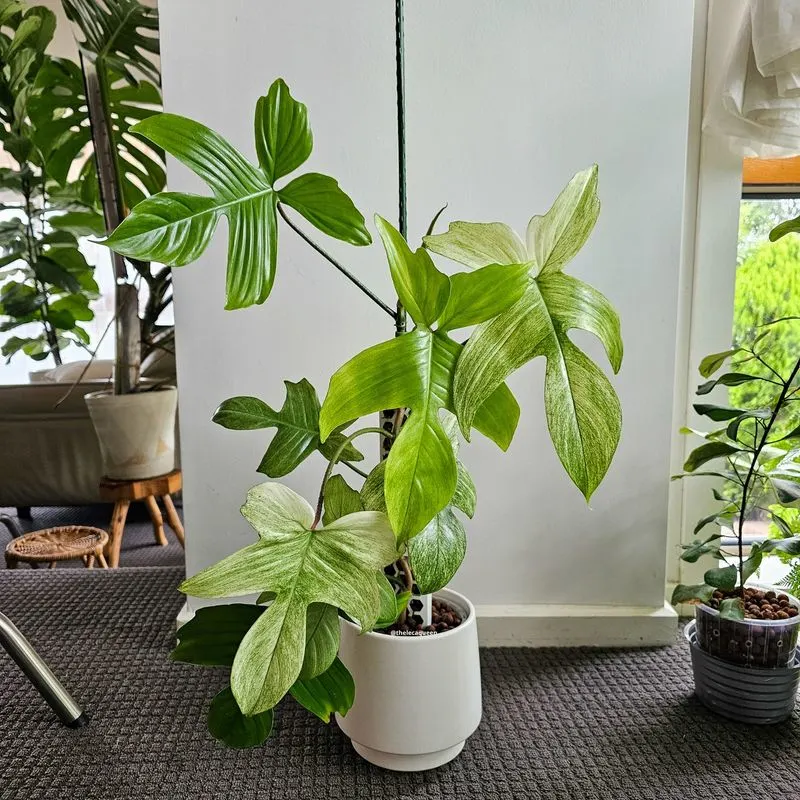
Philodendrons bring greenery into homes with their lush leaves, though indoor flowering is uncommon. They thrive in indirect sunlight and are known for their adaptability.
These plants require minimal maintenance, making them perfect for busy lifestyles. Philodendrons add a touch of the tropics to any room with their vibrant leaves.
Fun fact: The name “Philodendron” comes from the Greek words “philo” (love) and “dendron” (tree), reflecting their affinity for climbing and spreading.

